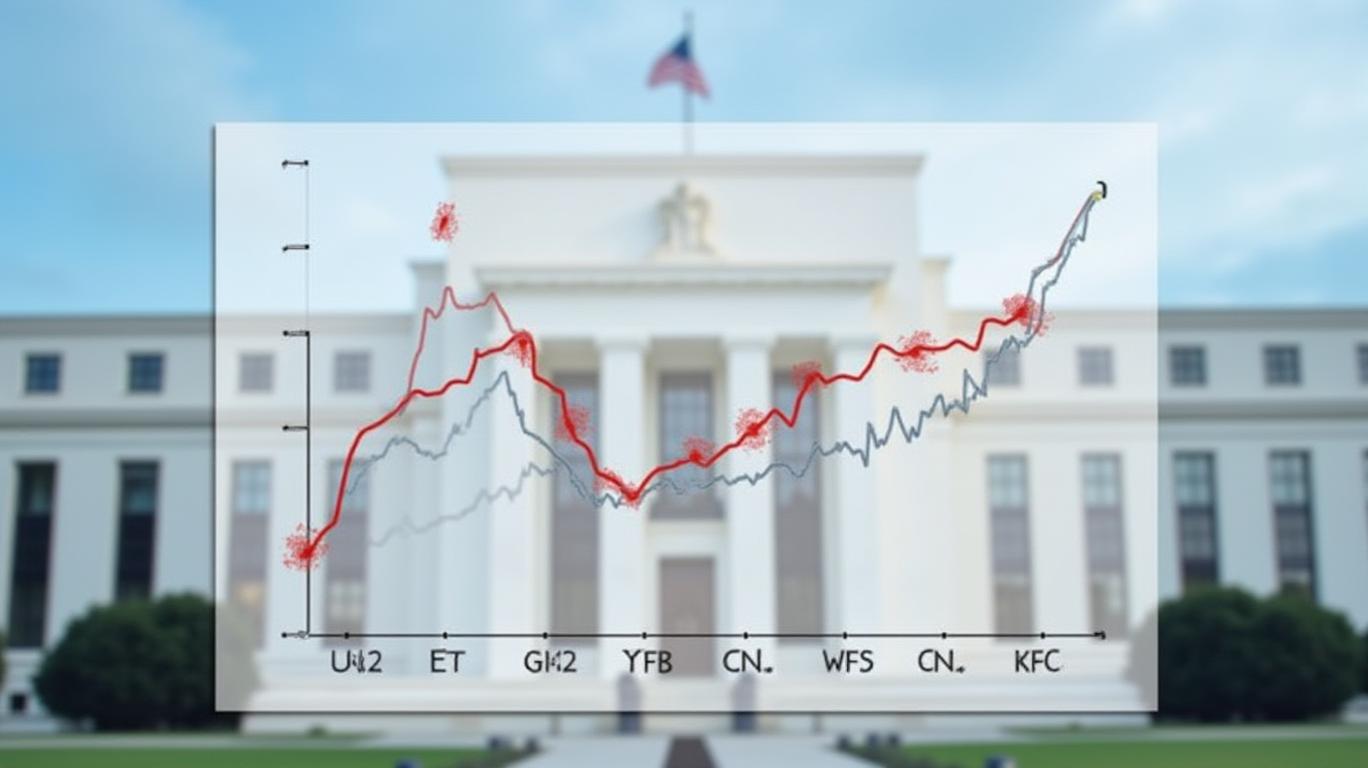Fed Policy and Trade Tensions: Navigating Uncertainty with Defensive Strategies
The Federal Reserve’s recent emphasis on “modestly restrictive” policy, underscored by officials like St. Louis Fed President Alberto Musalem, has created a pivotal moment for investors. With inflation expectations anchored but tariff-driven risks looming, portfolios must now balance defensive positioning with opportunities in sectors resilient to rising price pressures. Here’s how to navigate this crossroads.

The Fed’s Anchor: Why Rates Stay Elevated
Musalem’s March 2025 remarks revealed a critical truth: the Fed’s hands are tied by anchored long-term inflation expectations. While core PCE inflation remains above 2% (2.6% in January), longer-term expectations—such as those tracked by the University of Michigan—have held steady, giving policymakers room to avoid aggressive rate hikes. However, short-term expectations have surged due to tariff volatility, creating a precarious balance.
The Fed’s dilemma? Maintain rates at 4.25-4.5% until inflation convincingly trends lower. But with tariffs adding 0.7-1.2 percentage points to PCE inflation (via indirect “second-round” effects), the path to 2% is clouded. . This stalemate means investors should prepare for a prolonged status quo—rates will stay high until tariff impacts subside or labor markets weaken.
Sector Playbook: Overweight Defensives, Underweight Rate-Sensitive Stocks
The Fed’s stance creates clear winners and losers.
Overweight: Defensive Sectors
- Consumer Staples: Companies like Procter & Gamble (PG) and Coca-Cola (KO) thrive in inflationary environments. Their pricing power and stable demand make them recession-resistant.
. - Utilities: NextEra Energy (NEE) and Dominion Energy (D) offer steady dividends and inflation-linked revenue streams. Utilities are less sensitive to rate cuts and benefit from grid modernization spending.
- Healthcare: Defensive plays like Johnson & Johnson (JNJ) or UnitedHealth Group (UNH) pair strong cash flows with pricing flexibility in a slow-growth economy.
Underweight: Rate-Sensitive Sectors
- Real Estate: Vanguard Real Estate ETF (VNQ) faces headwinds as high borrowing costs crimp demand. Commercial real estate, in particular, is vulnerable to prolonged rate stagnation.
- Technology: Nasdaq (COMP) stocks, reliant on cheap capital, could underperform if rate cuts are delayed. Focus on dividend-paying tech like Microsoft (MSFT) or Cisco (CSCO) instead.
- Cyclical Consumer Discretionary: Retailers and automakers exposed to tariff-sensitive inputs (e.g., Ford (F) or Target (TGT)) face margin pressure unless prices pass through smoothly.
The Hidden Risk: Policy Uncertainty Could Prolong the Status Quo
Musalem warned that economic policy uncertainty—now at 20-year highs—could delay Fed easing. Tariffs aren’t just an inflation vector; they’re a confidence drain for businesses. Firms delaying investment and hiring (as seen in NFIB surveys) mean the labor market’s resilience may fade faster than expected.
Investors must assume no rate cuts in 2025. Even if inflation slips to 2.5%, the Fed’s “patient” stance and fear of unanchoring expectations will keep rates high.
Action Plan: Build a Dividend-Driven Portfolio with Liquidity
- Prioritize Dividends: Utilities (NEE), consumer staples (PG), and healthcare (JNJ) offer yields above 3% amid low Treasury yields.
- Hedge with Short-Term Treasuries: The iShares Short Treasury Bond ETF (SHV) offers liquidity and capital preservation. Avoid long-dated bonds, as even modest inflation spikes could erode returns.
- Avoid Speculation: Steer clear of cyclical sectors until tariff risks abate or labor markets show clear weakness.
Conclusion: Defensiveness is the New Aggressiveness
The Fed’s reliance on anchored inflation expectations has created a high-risk, high-reward environment. Investors who overweight defensive sectors and underweight rate-sensitive stocks will outperform in a prolonged status-quo scenario. With tariff impacts likely to linger, portfolios must prioritize stability over growth—until the Fed signals a clear path forward.
Act now. The Fed’s patience is your opportunity.

Comments
No comments yet